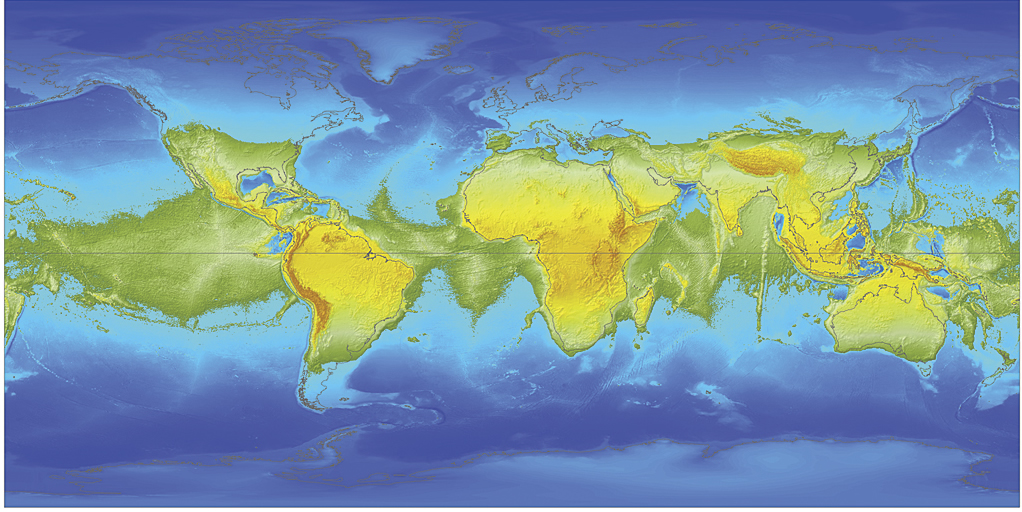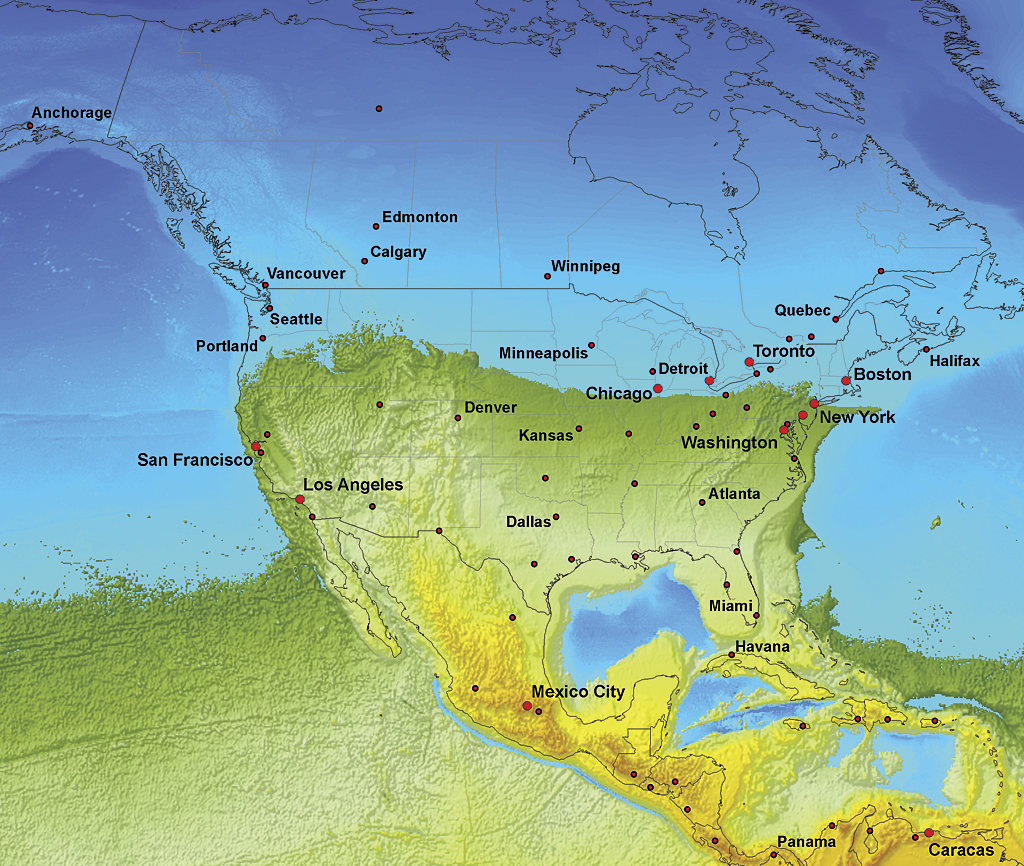S
silylene
Guest
What would the earth look like if it were somehow gradually spun down to cease spinning on its axis? This thought experiment was examined in detail here: http://www.esri.com/news/arcuser/0610/nospin.html
Please click the link above, the article is long with a lot of details and a nice movie of how the earth would change as it was despun. Note that their mathematical simulations ignore geostatic rebound (which would happen and be a source of large earthquakes)...so the maps are the immediate effect in the centuries after despun, not what our planet would look liked millions of years of geostatic rebound.
Small section below:
What would happen if the earth's rotation slowed down and finally stopped spinning over a period of a few decades? ArcGIS lets us model the effects of this scenario, performing calculations and estimations and creating a series of maps showing the effects the absence of centrifugal force would have on sea level.
If earth ceased rotating about its axis but continued revolving around the sun and its axis of rotation maintained the same inclination, the length of a year would remain the same, but a day would last as long as a year. In this fictitious scenario, the sequential disappearance of centrifugal force would cause a catastrophic change in climate and disastrous geologic adjustments (expressed as devastating earthquakes) to the transforming equipotential gravitational state.
The lack of the centrifugal effect would result in the gravity of the earth being the only significant force controlling the extent of the oceans. Prominent celestial bodies such as the moon and sun would also play a role, but because of their distance from the earth, their impact on the extent of global oceans would be negligible.
If the earth's gravity alone was responsible for creating a new geography, the huge bulge of oceanic water—which is now about 8 km high at the equator—would migrate to where a stationary earth's gravity would be the strongest. This bulge is attributed to the centrifugal effect of earth's spinning with a linear speed of 1,667 km/hour at the equator. The existing equatorial water bulge also inflates the ellipsoidal shape of the globe itself.


Please click the link above, the article is long with a lot of details and a nice movie of how the earth would change as it was despun. Note that their mathematical simulations ignore geostatic rebound (which would happen and be a source of large earthquakes)...so the maps are the immediate effect in the centuries after despun, not what our planet would look liked millions of years of geostatic rebound.
Small section below:
What would happen if the earth's rotation slowed down and finally stopped spinning over a period of a few decades? ArcGIS lets us model the effects of this scenario, performing calculations and estimations and creating a series of maps showing the effects the absence of centrifugal force would have on sea level.
If earth ceased rotating about its axis but continued revolving around the sun and its axis of rotation maintained the same inclination, the length of a year would remain the same, but a day would last as long as a year. In this fictitious scenario, the sequential disappearance of centrifugal force would cause a catastrophic change in climate and disastrous geologic adjustments (expressed as devastating earthquakes) to the transforming equipotential gravitational state.
The lack of the centrifugal effect would result in the gravity of the earth being the only significant force controlling the extent of the oceans. Prominent celestial bodies such as the moon and sun would also play a role, but because of their distance from the earth, their impact on the extent of global oceans would be negligible.
If the earth's gravity alone was responsible for creating a new geography, the huge bulge of oceanic water—which is now about 8 km high at the equator—would migrate to where a stationary earth's gravity would be the strongest. This bulge is attributed to the centrifugal effect of earth's spinning with a linear speed of 1,667 km/hour at the equator. The existing equatorial water bulge also inflates the ellipsoidal shape of the globe itself.




